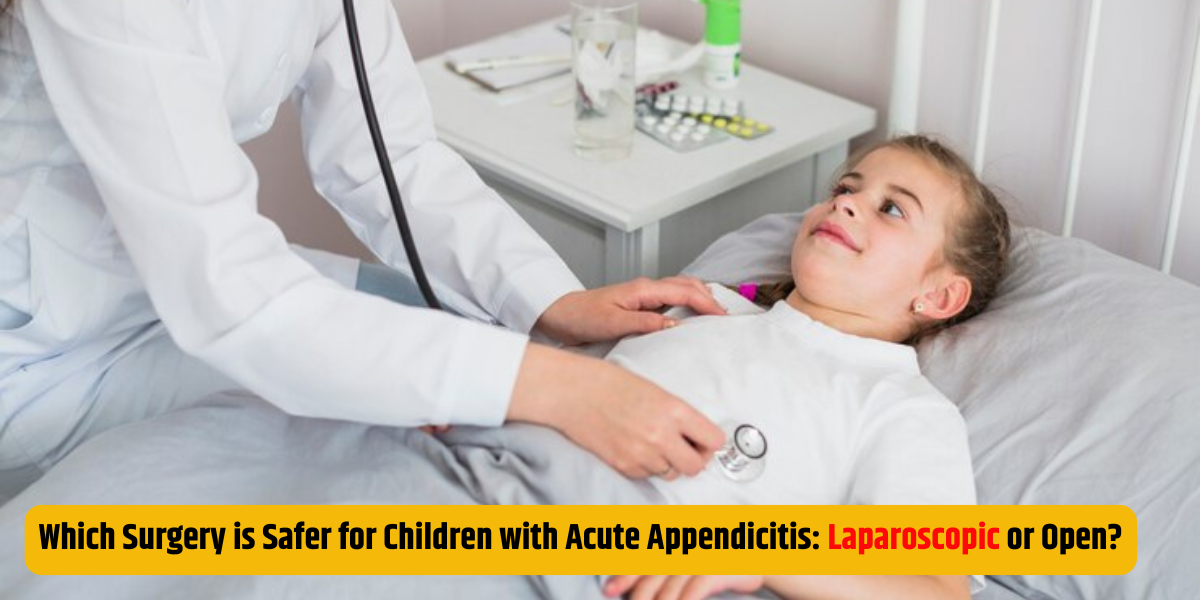Which Surgery is Safer for Children with Acute Appendicitis: Laparoscopic or Open?
When a child is diagnosed with acute appendicitis, surgery is often necessary to remove the inflamed appendix. As a parent, one of the most common concerns is ensuring the safest surgical option for their child. Two types of surgeries are typically considered: laparoscopic and open surgery. Let’s explore both options to understand which might be safer for your child.
What is acute appendicitis?
Acute appendicitis occurs when the appendix, a small tube attached to the large intestine, becomes inflamed. This condition can cause severe abdominal pain, fever, and vomiting. If left untreated, the appendix can burst, leading to serious complications. Surgery to remove the appendix, known as an appendectomy, is the standard treatment.
Pediatric Laparoscopic Surgery: A Minimally Invasive Approach.
Pediatric laparoscopic surgery, also known as “keyhole” surgery, is a minimally invasive procedure for children. A pediatric laparoscopic surgeon makes a few small incisions in the abdomen. Through one incision, a thin, flexible tube called a laparoscope is inserted to view the abdominal organs. Surgical tools are used through the other incisions to perform procedures such as appendix removal.
Advantages of Pediatric Laparoscopic Surgery:
Smaller Incisions: Pediatric laparoscopic surgery involves tiny cuts, which means smaller scars.
Quicker Recovery: Children often recover faster with less pain compared to open surgery. Most can go home within a day or two.
Lower Infection Risk: The smaller incisions reduce the chance of infections at the surgical site.
Better Visualization: The camera provides a clear view of the abdominal area, helping the surgeon operate with precision.
Open Surgery: A Traditional Method
Open surgery is the traditional method for removing the appendix. It involves making a larger incision in the lower right side of the abdomen to access and remove the appendix.
Advantages of Open Surgery:
Direct Access: The surgeon has a direct view and access to the appendix, which can be beneficial in complicated cases, such as when the appendix has burst.
Proven Method: Open surgery has been performed for many years, and surgeons are highly experienced with this technique.
Which surgery is safer?
Both laparoscopic and open surgeries are generally safe for children. However, pediatric laparoscopic surgery is often preferred because of its minimally invasive nature, quicker recovery time, and lower risk of complications.
When might open surgery be necessary?
In some cases, open surgery might be the safer option. For example, if the appendix has burst, causing a widespread infection, the surgeon may need to perform open surgery to thoroughly clean the abdominal cavity. Additionally, if the child has had previous abdominal surgeries, scar tissue might make laparoscopic surgery more challenging.
When treating acute appendicitis in children, pediatric laparoscopic surgery is often preferred because it is minimally invasive, resulting in a quicker recovery. Nonetheless, open surgery remains a viable option, particularly for more complex cases. The choice of procedure should be determined by your child’s pediatric surgeon, who will consider the specific condition and health requirements of your child.

